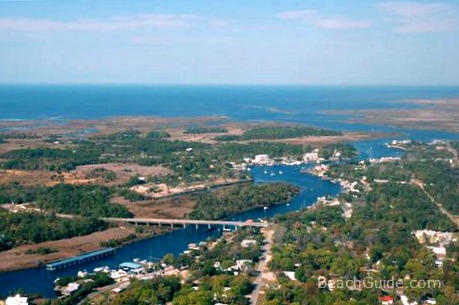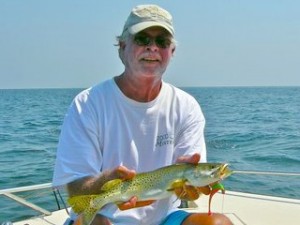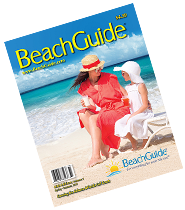Scalloping Puts Steinhatchee in the Spotlight
Most of the year, the tiny town of Steinhatchee (pronounced “steen,” not “stein,”) is a peaceful backwater, a remnant of Old Florida, visited mostly by anglers. But come July 1, it really starts hopping, and the action continues nonstop until September 10. That’s because these dates mark the start and end of scalloping season — and Steinhatchee just happens to be one of the best spots in the state to harvest these succulent bay bivalves.
One of the reasons scalloping draws such a crowd is that it requires no expensive equipment. And because scallops are easily accessible, it’s a suitable sport for the whole family.
“You’ll find the scallops anywhere from waist deep to 15 to 20 feet,” said BeachGuide spokesman John Taliaferro, who also happens to love to scallop and fish. However, scallops are hard to spot because their natural coloring allows them to camouflage themselves. Experts advise starting your search in the shallow water of the grass flats, where scallops tend to congregate.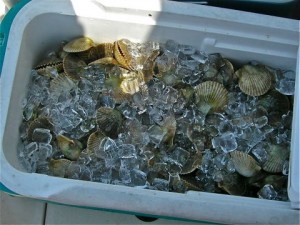
For scalloping in the shallows (around waist deep), following are the things you’ll need:
- Saltwater fishing license (available from the Florida Fish and Wildlife Conservation Commission at myfwc.com/license/)
- Dip net for catching scallops
- Mesh bag to hold the scallops
- Five-gallon bucket (mark it in two-gallon increments, and you’ll know when you’ve reached your legal limit — detailed below)
- Scallop/clam/oyster knife for cleaning scallops
- Sunscreen
If you plan to go by boat into deeper water, you’ll also need a Diver Down flag to display on the boat while you’re scalloping, plus a snorkel, mask, and fins. A cooler with ice will keep your catch fresh while you’re looking for more.
You’re on vacation, you say, and this all sounds like a lot of work. Not to worry. The Steinhatchee area is home to plenty of guide services who offer scalloping expeditions for a reasonable fee. Guide services provide all equipment, plus the fi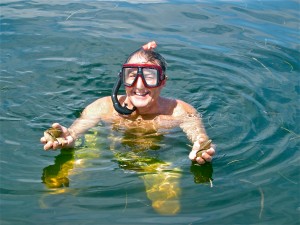 shing license. Better still, the guides know the spots where scallops are most likely to lurk, and they’ll also clean your catch at the end of the day.
shing license. Better still, the guides know the spots where scallops are most likely to lurk, and they’ll also clean your catch at the end of the day.
Legal Limits
Because scallops have almost disappeared from many parts of Florida, there are limits imposed on how many can be harvested. Individuals are limited to two gallons of whole scallops per person; boats with five or more people can harvest ten gallons. The maximum number of cleaned scallops is one pint per person and one-half-gallon per boat.
Not-So-Trivial Truths About Scallops
- Scallops have about 60 eyes lining the mantle of the shell. The eyes, a brilliant blue color, allow them to detect light, dark, and motion. So while they can’t see you, they know you’re there.
- Scallops can – and will – swim away, backwards or up, when you try to catch them. Fortunately for you, but not for them, they can’t swim very fast.
- Scallops pinch, so don’t be tempted to store your catch in a pocket or in your swimsuit.
Scalloping is part snorkeling, part treasure hunting, and part fishing, so it’s a challenge for teens and adults as well as tots. It’s also a great way to get to know more about the rest of the underwater wildlife in the Steinhatchee area.
Happy scalloping!
For places to stay and dine in the Steinhatchee area, go to Steinhatchee vacation rentals and Steinhatchee restaurants, right here at BeachGuide.com.

